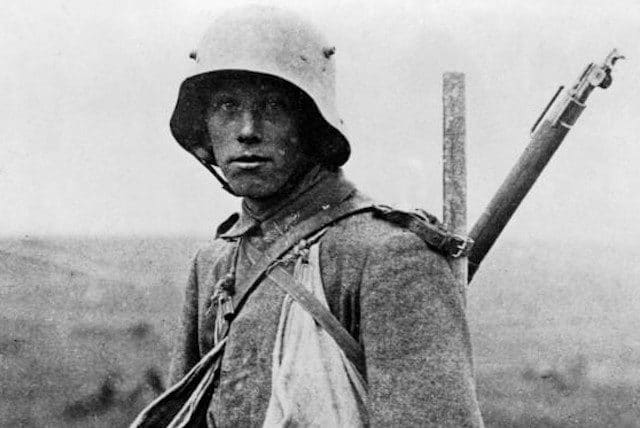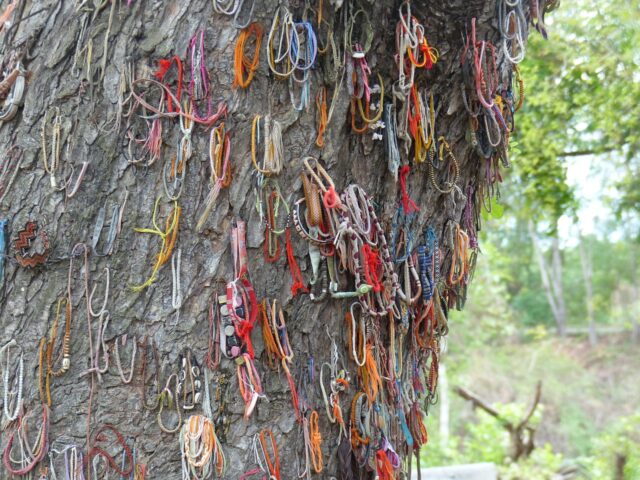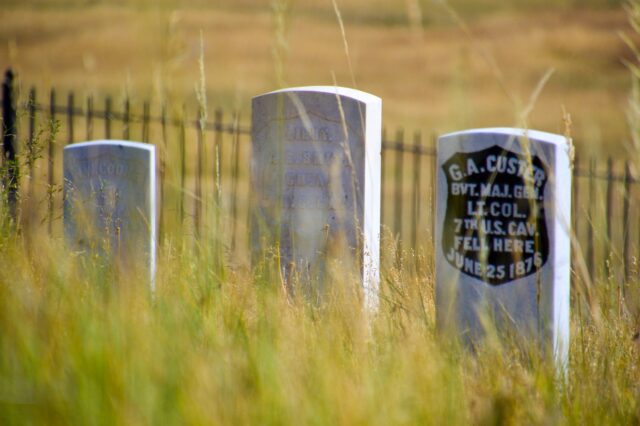Независимо от того, использовались ли они для совершения зла или для освобождения от цепей тирании, войны играли неотъемлемую роль в истории человечества. Изучение этой правды — несмотря на неприятности и зверства, часто связанные с боевыми действиями — необходимо, чтобы помочь понять прошлое, настоящее (например, то, что происходит в Украине) и ближайшее будущее.
Для тех, кто заинтересован в прогулке по следам истории, следующие сайты открыты для публики.
10. Геттисберг

В начале июля 1863 года пехота и кавалерия под командованием генерала Роберта Э. Ли предприняли попытку вторгнуться на север недалеко от города Геттисберг, штат Пенсильвания. Повстанцы намеревались путем переговоров положить конец Гражданской войне — конфликту из-за рабства — и сделать Конфедеративные Штаты Америки независимым государством. Им это почти удалось.
Напряженный трехдневный бой стал поворотным моментом войны, в результате которого погибло более 50 000 человек. Несмотря на упорную победу Союза, ожесточенные боевые действия, вызывающие разногласия, затянулись еще на два года.
Поле битвы позже послужило местом для знаменитой Геттисбергской речи президента Авраама Линкольна, речи, произнесенной на открытии Солдатского национального кладбища. Сегодня эти священные места находятся в ведении Службы национальных парков, что позволяет посетителям увидеть знаковые достопримечательности, такие как Литтл-Раунд-Топ, Логово Дьявола, Кладбищенский хребет и Холм Калпа.
9. Сомма

Убожество позиционной войны стало определяющим элементом «Великой войны» — стратегии, пораженной болезнями, крысами и ужасающей бойней. Битва на Сомме также преподнесла болезненный урок тщетности.
В ходе крупного наступления на севере Франции у реки Сомма союзные войска нацелились на хорошо укрепившиеся немецкие войска на Западном фронте. Однако после нескольких месяцев тщательного планирования что-то пошло не так. Немедленно.
1 июля 1916 года британская армия потеряла около 60 000 человек в первый день боев. В течение следующих четырех с половиной месяцев 1,3 миллиона солдат с обеих сторон были убиты или ранены в одном из самых кровопролитных сражений в истории. В конце концов бойня принесла небольшие территориальные приобретения, не имеющие стратегического значения.
Спустя более века шрамы от битвы все еще можно увидеть на земле. Тропа памяти , соединяющая города Альбер и Перонн, представляет собой остатки траншей, воронок от снарядов и несколько кладбищ.
8. Нормандия

6 июня 1944 года войска, состоящие из американских, британских и канадских подразделений, высадились на пляжах Нормандии в ходе крупнейшего в истории десантного вторжения . Солдаты быстро встретили упорное сопротивление неприступных немецких орудий при попытке освободить оккупированную нацистами Францию во время Второй мировой войны.
Утром битвы десантники и планеристы начали бой, высадившись в тылу врага, чтобы обезопасить мосты и съезды с дорог. Затем более 150 000 солдат союзников приступили к штурму и захвату пяти обозначенных плацдармов. Война в Европе закончилась менее чем через год.
Легкодоступные мемориалы и музеи в Нормандии являются свидетельством удивительного героизма и самопожертвования. Кроме того, вдоль береговой линии все еще можно увидеть бетонные доты, которые служат холодным напоминанием о не столь далеком прошлом.
7. Галлиполи

День Анзака, отмечаемый ежегодно 25 апреля в Австралии и Новой Зеландии, является национальным днем памяти. Он возник как дань уважения Австралийскому и Новозеландскому армейским корпусам (АНЗАК), которые приняли участие в кампании Галлиполи в 1915 году, их первом крупном сражении в Первой мировой войне. План битвы, призванный вывести Османскую империю из войны, в конечном итоге представлял собой катастрофическую неудачу британского командования, а именно Уинстона Черчилля, который позже был вынужден уйти в отставку с поста лорда Адмиралтейства.
После высадки на западном берегу полуострова Галлиполи в Турции войска Анзака понесли исключительно высокие потери, в первую очередь от беспощадного пулеметного огня. Солдаты, пережившие первоначальный натиск, столкнулись с дополнительными проблемами, такими как нехватка еды и воды, болезни, изнуряющая жара и постоянная угроза роения трупных мух. Наконец, после восьми месяцев чистого ада, военное руководство решило выйти из безнадежного тупика и отступить.
Тогда и сейчас крутой скалистый ландшафт Галлиполи представляет собой грозный естественный барьер для вторжения, подчеркивая почти невыполнимую задачу, с которой столкнулись солдаты союзников. Помимо кладбища Анзак , поле битвы включает в себя 100-футовый мемориал Хеллеса на оконечности полуострова с видом на ценный пролив Дарданеллы.
6. Кхесань

В качестве прелюдии к Тетскому наступлению 1968 года во время войны во Вьетнаме силы Народной армии Северного Вьетнама (ПАВН) нанесли массированный артиллерийский обстрел гарнизона морской пехоты США в Кхесани . Там американские солдаты провели 77 дней, участвуя в ожесточенных боях, которые стали самым смертоносным сражением конфликта в Юго-Восточной Азии.
Хотя военная база не имела большого стратегического значения, генерал Уэстморленд, командующий Командованием военной помощи США во Вьетнаме (MACV), и президент США Линдон Б. Джонсон настаивали на сохранении позиции любой ценой. Однако это решение дорого обошлось.
Осада Кхесаня в первую очередь служила отвлекающей тактикой, позволив подразделениям Северного Вьетнама и Вьетконга провести гораздо более разрушительную серию атак на Сайгон и другие городские центры. Тем временем 6000 морских пехотинцев в Кхесани сумели отбиться от более 20 000 солдат противника. К моменту окончания осады американские потери составили 2800 человек убитыми или ранеными. Вскоре последовало аналогичное истощение, связанное с усилиями по оказанию помощи.
Правительство Вьетнама теперь позволяет путешественникам исследовать бывший комплекс и другие места, связанные с войной, в том числе туннели Кучи . Построенный во время Первой Индокитайской войны, обширный лабиринт протяженностью 150 миль состоял из многочисленных комнат, лазарета, кухни, склада продовольствия и складов боеприпасов. Подземная сеть также содержала легионы грызунов, насекомых и ядовитых змей — существ, которым было наплевать, что война окончена. Входите на свой страх и риск.
5. Берлин

В последние дни Второй мировой войны союзные войска устремились к столице Германии, полные решимости положить конец шести годам невообразимого насилия и разрушений со стороны нацистской военной машины . Но, по воле судьбы, Красная Армия добралась туда первой — и приступила к грабежу по своему усмотрению — варварство , в результате которого русские солдаты изнасиловали около двух миллионов немецких женщин.
В конце концов, союзники разделили добычу на различные секторы, запустив колеса холодной войны. Восемь десятилетий спустя по всему восстановленному городу разбросано множество воспоминаний о войне , в том числе остатки контрольно-пропускного пункта Чарли и Берлинской стены.
Хотя печально известный фюрербункер Гитлера давно снесен, посетители все еще могут спуститься в недра подобного бункера времен Второй мировой войны . Экскурсия леденяще воссоздает подземный комплекс, где немецкий диктатор провел свои последние дни перед самоубийством.
4. Азенкур

Сонная деревушка Азенкур с нынешним населением около 300 человек расположена в департаменте Па-де-Кале на севере Франции, примерно в трех часах езды от Парижа. Спокойная обстановка и пасторальный пейзаж резко контрастируют с хаосом и кровопролитием, произошедшим здесь 25 октября 1415 года, во время битвы при Азенкуре .
В ходе Столетней войны (1337–1453 гг.) в этом позднесредневековом сражении английские и валлийские солдаты, превосходящие по численности, в значительной степени полагались на длинный лук, чтобы победить французскую армию. Позже Шекспир увековечил это эпическое столкновение в своей пьесе « Генрих V» , которая включает в себя знаменитую боевую речь, которую с тех пор имитировали в бесчисленных фильмах о войне, от « Храброго сердца » до «Зулу».
Сайт может похвастаться недавно расширенным центром «Agincourt 1415» с интерактивными дисплеями, оружием, доспехами и видеопрезентациями, призванными дать посетителю почувствовать «запах крови и роз». Для тех, кто ищет что-то более аппетитное, свежеиспеченные круассаны и кофе с молоком подаются в близлежащем ресторане Boulangerie Evrard Chez Elodie et Nicolas .
3. Поля смерти Камбоджи

В период с 1975 по 1979 год более двух миллионов человек были убиты в Камбодже правящей Коммунистической партией Кампучии, более известной как Красные кхмеры . Несколько братских могил после этой резни можно найти на окраине Пномпеня, столицы страны и крупнейшего города.
К сожалению, Камбоджа остается одним из наиболее пострадавших государств мира от загрязнения минами, остатками кассетных боеприпасов и другими взрывоопасными пережитками войны (ВПВ), включая боеприпасы, сброшенные американскими бомбардировщиками во время секретных миссий во время войны во Вьетнаме.
Одним из наиболее ярких памятников неспокойного прошлого этого древнего королевства является Музей геноцида Туол Сленг , расположенный на территории бывшей средней школы, превращенной режимом красных кхмеров в центр для допросов и содержания под стражей. Расположенный в самом сердце Пномпеня, он «хранит свидетельства трагического периода камбоджийской истории с целью побудить посетителей стать посланниками мира».
2. Маленький Большой Рог

Расположенный в 60 милях к юго-востоку от Биллингса, штат Монтана, множество мемориалов и туристических достопримечательностей отмечают битву«Последний бой Кастера». В июне 1876 года 7-й кавалерийский полк США под командованием подполковника Джорджа Кастера был уничтожен воинами сиу-лакота, шайеннов и арапахо. Однако их победа будет иметь ужасные последствия.
Смерть Кастера подтолкнула правительство США к эскалации систематического геноцида индейских племен. Те, кого не убили, часто подвергались воздействию смертельных микробов и болезней, таких как оспа, грипп и корь.
Тем не менее, романтизированные рассказы о кавалерии США бесконечно изображались в фильмах, на телевидении и в книгах. Однако в этих рассказах обычно не упоминается, как из-за высокомерия и сомнительного лидерства Кастера были убиты не только он сам, но и два его брата, племянник и зять.
Национальный монумент «Поле битвы при Литтл-Бигхорне » открыт круглый год, кроме Дня Благодарения, Рождества и Нового года. Помимо самого поля битвы, в комплексе есть музей, центр для посетителей и национальное кладбище Кастер.
1. Освенцим

Первое, что вы видите, приближаясь к главным воротам Освенцима, — это табличка с надписью «Arbeit Macht Frei» («Работа делает вас свободным»). Жестокая ирония задает тревожный тон во время посещения крупнейшего нацистского концлагеря и центра смерти.
Участок расположен на окраине южного польского города Оввичим, примерно в 30 милях от международного аэропорта в Кракове. Достоверно сохранившиеся территории состоят из двух частей бывшего лагеря, Освенцима и Биркенау, и включают в себя остатки печально известных газовых камер. Посетители обязаны вести себя с должной торжественностью и уважением — иными словами, не место делать селфи с утиными губами для своего Instagram-аккаунта.
Ужасы Холокоста трудно осознать, но это важный урок, из которого может извлечь пользу все человечество. Пожалуй, лучше всех об этом сказал испанский философ Джордж Сантаяна: «Те, кто не может вспомнить прошлое, обречены на его повторение».
📚 Не пропустите интересную информацию:
-
10 достопримечательностей Ярославля, которые можно увидеть за один день на автомобиле
Ярославль… Знаете, это один из тех городов, в который хочется возвращаться. Не знаю, как это объяснить, но он словно затягивает. Тут такая смесь, такая дикая,... -
Обзор «Вечного» Netflix: скучное шоу о вторжении инопланетян с великолепными визуальными эффектами и историческими аллегориями
Научно-фантастический жанр — это место для едких комментариев о политике, культуре и обществе. Фильм «Хирак Раджар Деше» , снятый правительством Западной Бенгалии, иронично рассказывает о... -
От Нидерландов до Шри-Ланки: 12 стран с более чем одной столицей по историческим и политическим причинам
Столицы — это как сердце страны; Они известны как центр политики, экономики и культуры. Так может ли у страны быть две столицы? На первый взгляд... -
Исторические факты о Стамбульском археологическом музее
Стамбульский археологический музей, проливающий свет на культурное наследие Стамбула, является не только первым музеем в Турции, но и предлагает своим посетителям насыщенное историческое путешествие по... -
10 мест, которые обязательно нужно посетить тем, кто хочет открыть для себя историческое наследие Испании
Испания — великолепная страна для любителей истории! Потому что на протяжении всей истории этой страной правили лидеры из самых разных культур: кельты, римляне, арабы и...







